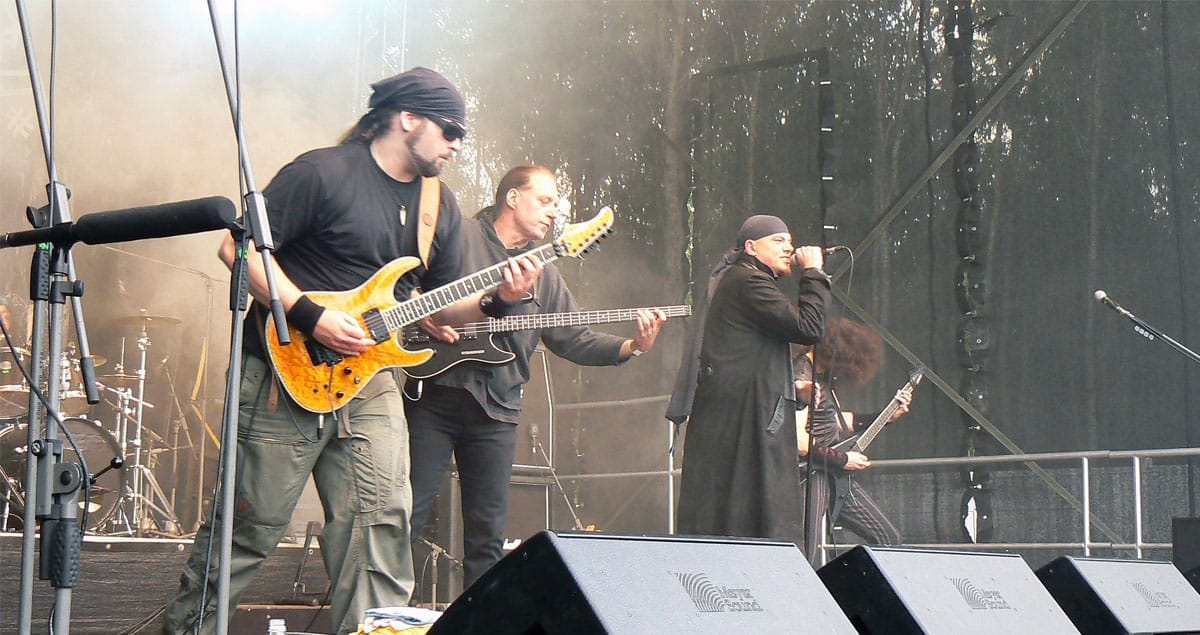Mekong Delta: Germany’s Progressive Thrash Visionaries
Introduction
Among the many bands that emerged from the thrash metal boom of the 1980s, few were as unusual, ambitious, and uncompromising as Mekong Delta. Formed in Germany in 1985 by producer Ralf Hubert, the band quickly gained a cult reputation for blending the speed and aggression of thrash with the technical intricacies of progressive rock and the sophistication of classical music. While they never reached mainstream popularity like Metallica or Slayer, Mekong Delta carved out a distinctive legacy that has influenced generations of progressive and technical metal bands.
Origins and Concept
Ralf Hubert, a classically trained musician and producer, envisioned a project that would push thrash beyond the genre’s boundaries. He founded Mekong Delta with musicians drawn from the German metal scene, though the band initially kept its lineup shrouded in mystery, adding to its underground aura.
The name “Mekong Delta” symbolized both complexity and danger, evoking the Vietnamese river region known for its labyrinthine waterways and history of conflict. Hubert intended the band to challenge listeners with intricate structures, rapid tempo changes, and classical influences that were rare in thrash at the time.
Early Albums and Experimentation (1987–1990)
Mekong Delta’s self-titled debut, Mekong Delta (1987), showcased their early style: frenetic riffs, unusual song structures, and an intellectual atmosphere. It stood apart from the raw aggression of other German thrash acts like Kreator or Sodom.
Their second album, The Music of Erich Zann (1988), was inspired by H.P. Lovecraft’s short story, blending dark atmosphere with technical thrash precision. Tracks like Memories of Tomorrow revealed the band’s flair for fusing literature, philosophy, and metal.
By the time of The Principle of Doubt (1989), Mekong Delta had developed a reputation for fearless experimentation. The album tackled themes of existentialism and political paranoia, marrying technical riffing with unsettling, almost avant-garde arrangements.
Dances of Death (and Other Walking Shadows) (1990) marked a high point in their classical integration. The 20-minute title track was a multi-movement suite that pushed thrash into symphonic territory, a bold step for its time.
Classical Meets Metal: Visionary Ambition
What truly set Mekong Delta apart was Hubert’s determination to bridge classical music with thrash. This was not simply a matter of orchestral flourishes or occasional references—it was structural, thematic, and deeply embedded in the compositions.
Their 1992 album, Kaleidoscope, included a full reinterpretation of Modest Mussorgsky’s Pictures at an Exhibition, reimagined through thrash guitars and technical drumming. This audacity cemented Mekong Delta as pioneers of progressive thrash, though it also limited their mainstream appeal.
Mid-1990s Decline and Hiatus
The 1990s were a turbulent period. Thrash metal’s popularity waned in the face of grunge and alternative rock, while Mekong Delta’s demanding sound kept them on the fringes. By the mid-1990s, the band had gone largely silent.
Ralf Hubert, however, never abandoned his vision. He continued producing and composing, quietly preparing for Mekong Delta’s eventual return.
Return and Modern Era (2007–Present)
After more than a decade of dormancy, Mekong Delta returned with Lurking Fear (2007). The album reintroduced their intricate style to a new generation of listeners, combining their trademark technical thrash with updated production.
Subsequent albums such as Wanderer on the Edge of Time (2010) and In a Mirror Darkly (2014) reaffirmed their progressive identity. These works explored grand concepts drawn from literature, psychology, and existential philosophy, framed by music that demanded close attention and rewarded repeated listening.
The band’s 2017 release, In the Past, revisited their early influences and reaffirmed their role as cult innovators in the progressive thrash scene.
Musical Style
Mekong Delta’s music is characterized by:
- Complex Structures: Long, multi-part compositions with frequent tempo and key changes.
- Technical Thrash Riffing: Aggressive yet meticulously arranged guitar lines.
- Classical Integration: Borrowing directly from symphonic structures and composers like Mussorgsky and Shostakovich.
- Dark Themes: Lyrics dealing with existential dread, literature, and philosophical inquiry.
- Atmospheric Experimentation: Use of dissonance and avant-garde elements to unsettle the listener.
Their style is less about headbanging simplicity and more about intellectual engagement, positioning them closer to progressive metal pioneers like Watchtower or Voivod than to mainstream thrash acts.
Legacy and Influence
Though never commercially dominant, Mekong Delta’s impact has been profound within niche circles:
- They helped pave the way for progressive and technical thrash bands such as Coroner, Anacrusis, and Sieges Even.
- Their integration of classical music foreshadowed later symphonic and progressive metal movements.
- Their cult status has inspired countless underground musicians to push metal beyond conventional boundaries.
Critics and fans often describe them as one of the most underrated yet visionary thrash metal bands of all time.
Challenges and Cult Status
Mekong Delta’s complexity was both their greatest strength and their commercial limitation. Their music demanded patience, concentration, and an appreciation for classical forms, which put them at odds with the accessibility of mainstream thrash.
Furthermore, the band’s secrecy—keeping lineups obscure for years and letting the music speak for itself—added to their enigmatic reputation. For fans, however, this only deepened their cult appeal.
Conclusion
Mekong Delta stand as one of the boldest and most uncompromising bands in metal history. By merging the aggression of thrash with the sophistication of classical music and the complexity of progressive rock, they created a sound uniquely their own. Though they never achieved mass popularity, their influence within progressive and technical metal circles is undeniable.
From The Music of Erich Zann to Wanderer on the Edge of Time, Mekong Delta’s catalog represents a journey through fearlessness, intellect, and musical exploration. They remain a band for those who seek more than just heavy riffs—for those who embrace metal as an art form that can challenge, provoke, and inspire.




